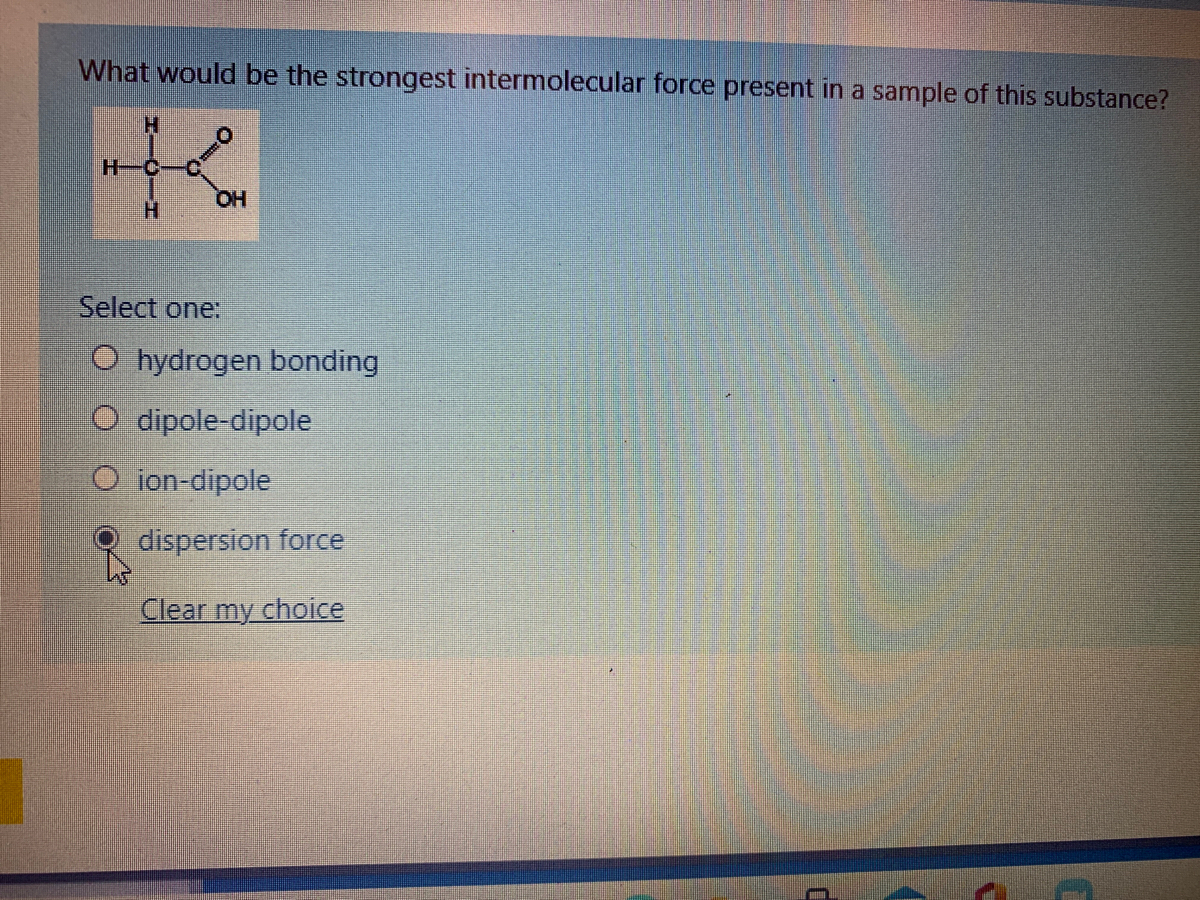

ION BONDING HYDROGEN BONDING DIPOLE DIPOLE FULL
Smaller than a full positive or negative charge on ions, so the interaction willĭissolves in water, because the Na + - Cl - interaction is The partial charge on the polar compound is Polar compound, m, its dipole moment, E µ Q m/d 2. Interaction between the full charge of an ion, Q, and the partial charge of a Separate the positive and negative ions from their positions in the crystalline Which have lost electrons, and full negative charges on the anions, which haveįeatures of salts is their extremely high melting points. In salts, there are full positive charges on the cations,

The charges, Q 1 and Q 2, divided by the distance squared,ĭ 2. Law states that the potential energy, E is proportional to the amplitude of Strength of the IMF will, then, depend on the magnitude of these charges. KJ/mol and to break the remaining IMF in the vaporization of waterĪll IMF are electrostatic in nature, the interaction of To break the IMF in ice (heat of fusion) requires 6.02 Substances with high IMF will have higher melting and boiling Of vaporization (heat required to vaporize a liquid) are determined by the Kinetic energy of the gas molecules, as predicted by the Molecular Kinetic The remaining hydrogen bonds are broken, and all of the water moleculesĪre now moving independently of each other, with no remaining hydrogenĪddition of heat raises the temperature of the steam and increases the average At this temperature, the water, at 100 oC, There is a second phase transition at 100 oC. Hydrogen bonding between molecules, but they are no longer in fixed positions The movement of the water molecules will increase in the liquid L), addition of heat will then lead to an increase in temperature of the liquidĪgain, an increase in the KE of the system. Transition temperature, 0 oC, all of the ice will be converted to liquid It is the attraction between the partial positive charges on the H and theĭiscussed earlier in the semester, these are hydrogen bonds, holding the water molecules in the crystalline It is coulombic in nature, arising from the attraction of charged This is the energy associated with the IMF, which are holding the H 2O Temperature, the added energy goes to changing the Potential Energy of the system. The melting point of ice, further addition of heat does not change the temperature. Substance is unique, and depends on the chemical nature of the substance. Of ice, the heat required to change the temperature of 1 gram of ice by 1 oC. The amount of heat required to raise the temperature of the The bond lengths and angles are oscillating Mu 2) which is proportional to the absolute temperature (K) of theĬase of water, the O-H bonds are stretching and bending. The heat that we are adding is increasing the In this Heating Curve, we are starting withĪs we add heat, we raise the temperature of the ice. Time span, the more heat has been added to the system. The time axis represents the addition of heat The transitions between the phases, phase changes, can be viewed in terms of a Heating Curve, like the one shown below, for water. In solids, the molecules vibrate about fixed Liquids, the molecules slide past each other freely. In the gaseous phase, molecules are in random The IMF govern the motion of molecules as well. Intermolecular forces (IMF) are the forces which cause real gases toĪre also responsible for the formation of the condensed phases, solids and liquids. Of its container and is extremely compressible. Steam will assume both the shape and volume

As solid ice, H 2O possesses a definiteĭefinite volume, but will assume the shape of its container. Properties of H 2O are very different in the three states. The same, the molecular shape is the same and the hybridization of the oxygen In all three cases, the bond angles are the same, the dipole moment is In its three forms, ice, water and steam. Intermolecular forces exist between molecules and influence the (bonding forces) exist within molecules and influence the chemical


 0 kommentar(er)
0 kommentar(er)
